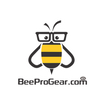
When was the last time you paused to think about how critical your choice of bees is? While most guides will give you generic advice like “Italian bees are gentle” or “Carniolan bees are perfect for cold climates,” this blog goes a step further. Drawing from real-world anecdotes and unconventional strategies, we’ll help you not only choose the best bee breed but also understand why your choice matters for sustainability, productivity, and even biodiversity.
Why the Right Bee Breed Matters
When starting your beekeeping journey, you may assume that all bees are the same. However, each breed has specific traits—some excel in honey production, while others are better suited for pollination or resisting pests like Varroa mites.Forget "One-Size-Fits-All" — Which Bee Suits You?
Think about your bees as employees in a startup. Here’s a twist:
- If you want aggressive go-getters: Go for Russian bees (Northern Resilient). They’ll battle pests and still deliver results.
- Prefer loyal team players? Carniolan bees (Cold Champions) have a reputation for being cooperative.
- For innovative thinkers who explore nectar sources others ignore, Caucasian bees (Nectar Specialists) are your ideal fit.

Top Bee Breeds for Beekeeping (Based on My Experience)
1. Italian Bees (Apis Mellifera Liguistics)

-
Strengths:
- High honey production.
- Disease-resistant.
- Low swarming tendency.
-
Weaknesses:
- Food-intensive during winter.
- Prone to robbing nearby hives.
2. Carniolan Bees (Apis Mellifera Carnica)
Carniolan bee (Apis Mellifera Carnica) foraging on flowers—perfect for cold climates. Carniolan bees are a favorite for their ability to thrive in cold weather and their calm temperament.

I’ve observed their adaptability during harsh winters, making them perfect for regions with fluctuating temperatures.
-
Strengths:
- Thrive in cooler climates.
- Strong foraging ability even in low temperatures.
- Resistant to pests like Varroa mites.
-
Weaknesses:
- High swarming tendency.
3. Buckfast Bees (Hybrid Innovators)
Buckfast bee working hard—a disease-resistant hybrid favorite. This hybrid breed, developed by Brother Adam, is ideal for those who prioritize low-maintenance hives. My experience with Buckfast has been rewarding; their resilience against diseases significantly reduces hive maintenance.

My experience with Buckfast bees has been rewarding; their resilience against diseases significantly reduces hive maintenance.
-
Strengths:
- Disease-resistant.
- High adaptability.
- Efficient honey production.
-
Weaknesses:
- May lose hybrid vigor over generations.
Visual Matrix for Decision-Making
| Bee Breed | Productivity | Behavior | Adaptability | Hive Maintenance |
|---|---|---|---|---|
| Mediterranean Producers (Italian) | High | Gentle | Warm Climates | Easy |
| Cold Champions (Carniolan) | High | Gentle | Cold Climates | Easy |
| Hybrid Innovators (Buckfast) | Medium | Moderate | All Climates | Low |
What Beekeeping Blogs Don’t Tell You
Most blogs will focus on honey production or climate adaptability—but let’s dig deeper:
-
Biodiversity Matters: By choosing native or locally adapted bees, you contribute to regional ecosystems. Bees pollinate over 75% of global crops, so picking the right breed isn’t just about honey—it’s about food security.
-
Behavioral Adjustments: Did you know that Carniolan bees communicate with waggle dances differently in colder climates? Such insights can improve your hive management dramatically.
-
Sustainability First: Russian bees (Northern Resilient), for example, thrive with minimal chemical pest control. If you're eco-conscious, this breed can align your beekeeping goals with a sustainable approach.

Conclusion: Which Bee Breed Is Best for You?
Choosing the best bee breed isn’t just a technical decision—it’s a personal one. By understanding how different breeds behave, adapt, and thrive, you can build an apiary that reflects your goals and values.
So, are you ready to make your choice? Whatever breed you select, remember that the right tools and knowledge make all the difference. Visit our collections today to gear up for your best beekeeping season yet.


